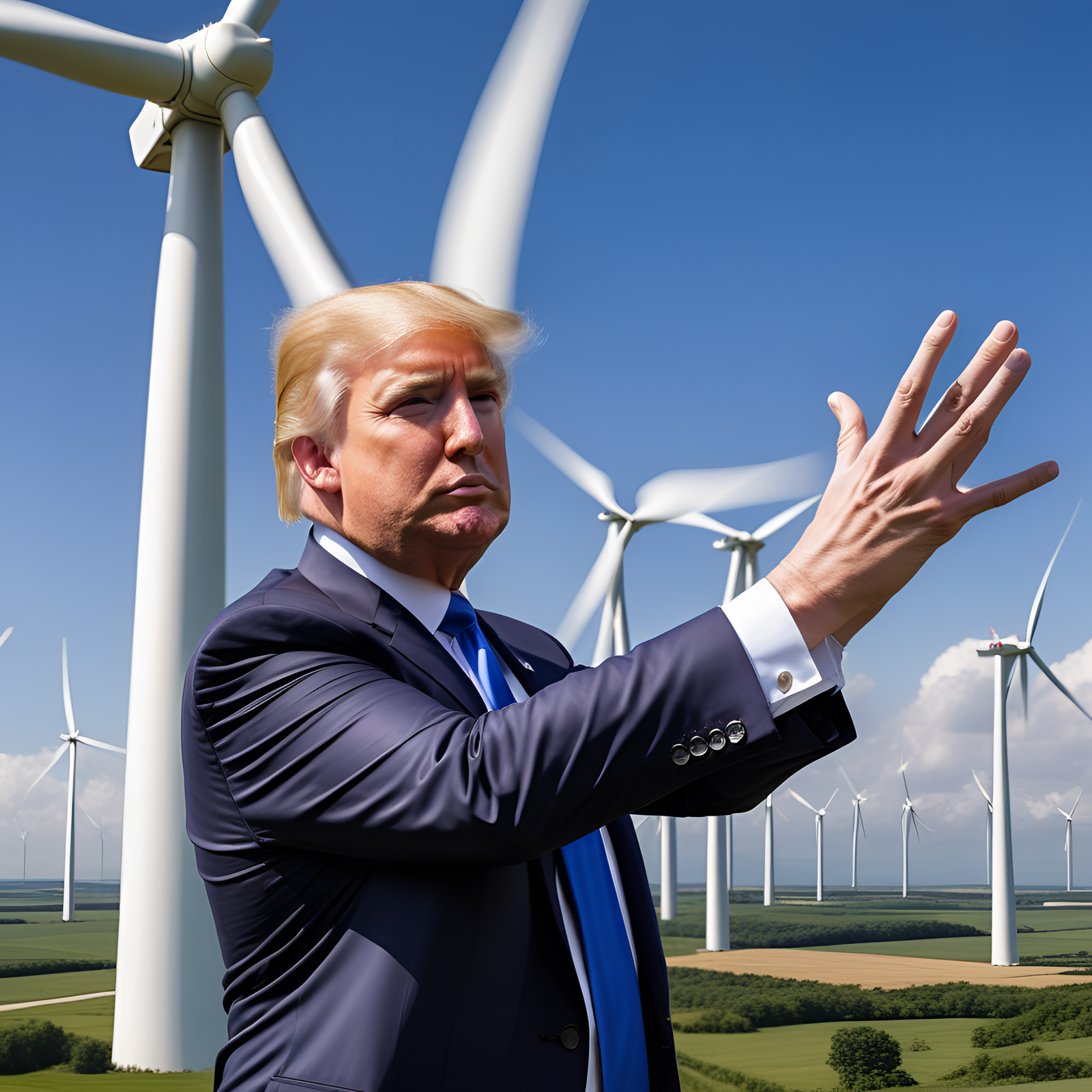President Donald Trump was relentless on the campaign trail in his commitment to unleash American prosperity with an energy revolution.
From the oil wells of the American West to the gas pipelines of the Midwest, Trump said his administration will reverse the anti-energy policies of the Biden White House by finally letting energy explorers and entrepreneurs do what they do best. But Trump’s energy revolution may have limits after he signed an executive order freezing permits for new offshore wind projects.
Issued on his first day in office, the order halts all future wind energy leases on the offshore continental shelf and denies renewals for existing projects. It also requires the Department of the Interior to review wind energy leases nationwide, including inland.
Trump’s distaste for wind energy and its environmental effects are well-known (“they drive the whales crazy”), but this campaign against a functional source of electricity is baffling.
The current energy output of commercial wind projects off America’s shore is just 174 megawatts, enough to power about 50,000 homes, produced off the coasts of Rhode Island, Virginia and New York.
But the total capacity could be as high as 80 gigawatts on windier days according to the National Renewable Energy Laboratory, meaning that at least half of this could still easily travel along transmission lines to power substations on our coasts.
If we were to conservatively estimate offshore wind capacity at 25%, this would still be enough to power all households in Virginia and Maryland for one year. If this amount of electricity can be produced by coastal areas and the companies can still make a profit doing it, why shouldn’t they be free to do so?
As usual, Trump’s criticism of this industry is half-right and half-wrong.
It is true that the Biden administration directed a lot of federal subsidies toward wind projects. Trump’s executive order calls for an assessment of the “economic costs associated with the intermittent generation of electricity and the effect of subsidies” because the industry received a large boost in President Joe Biden’s Inflation Reduction Act.
In the Department of Government Efficiency era, arguing for taxpayer subsidies toward specific energy sources is a losing battle. But kicking wind energy to the curb is a mistake.
The total amount of electricity generated by wind power in the United States was 12%. If our offshore capabilities in say, Virginia, matched those we have in the fields of Texas, which has as many as 160,000 wind turbines, that would make a noticeable difference to energy consumers.
Wind energy should be allowed to operate and compete in the free market for consumer dollars. If wind fails, let it fail. The same reasoning should be applied to all types of energy.
Trump’s executive order represents a sort of cognitive dissonance.
By questioning the contributions of wind energy, the president relies on studies mandated by the National Environmental Policy Act (NEPA) to make this determination. These are the same reports that have stunted the construction of energy projects and even stymied entrepreneur Elon Musk’s wishes to stage rocket launches in certain areas.
For Trump to use NEPA as justification for hostility to offshore wind, while at the same time unraveling NEPA in an executive order 24 hours later, is major league mixed messaging.
Wind energy was no doubt propped by Trump’s predecessor, but that fact shouldn’t deter Trump from using every available tool to deliver lower energy prices to consumers.
Energy abundance means shunning the degrowth mentality that got us here. It means endorsing every type of energy, wind, solar, oil or nuclear, that can freely compete for our dollars. Trump should get favoritism out of the energy markets.
Yaël Ossowski writes about energy policy and is deputy director of the Consumer Choice Center in Washington, D.C.
Originally published in the Virginian-Pilot (archive #1, #2), and found in print here.
Syndicated in the Daily Press.
